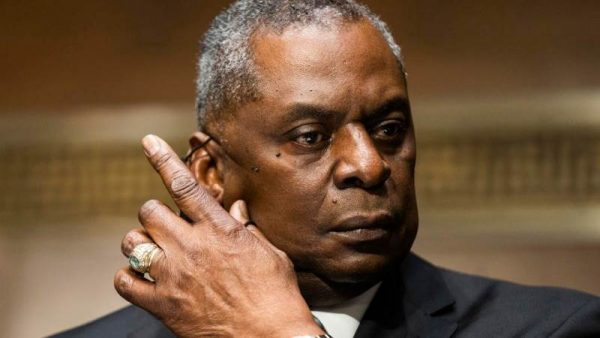National Security Issue? I think not.
Some thoughts on the issue of diversity at the 4-star general level in the US military and whether it impacts readiness. It does not.

By Capital Thinking • Issue #848 • View online
Recently the Secretary of Defense Lloyd J Austin III (a former General and West Point gradate) made comments indicating the current status of diversity and inclusion in the American military at the general officer strata rises to the level of a “national security risk.”
In the military when they want to scare the civilians or they want to suggest that something rises to a level such that America might not win a war, they call it a “readiness risk.”
Military Diversity And Inclusion Is NOT A National Security Issue
Jeff Minch | The Musings of the Big Red Car:
Sec of Def Austin’s comments were expounded upon by a speech Chairman of the Joint Chiefs General Mark Milley made wherein he stated that currently the military had two black generals amongst a total of forty-one whilst the military is twenty percent black [against a back drop of the American citizenry being 13.4% black].
General Milley also characterized this situation as a “readiness risk.”
What’s the sitch again, Big Red Car?
Let’s reiterate the SITUATION:
1. The US military has 2 black Generals (meaning 4-star Generals).Brigadier Generals >>> Major Generals >>> Lieutenant Generals >>> Generals. One star, two stars, three stars, four stars.
2. The US military has 41 Generals.
3. The military is 20% black.
If 20% of the 41 Generals were black, this would be 8.2 black Generals, a shortfall of 6.2 black Generals.
4. America is 13.4% black.If 13.4% of the 41 Generals were black, this would be 5.5 black Generals, a shortfall of 3.5 black Generals.
Readiness issue, Big Red Car?
This fact pattern above is what motivates our Secretary of Defense and the Chairman of the Joint Chiefs of Staff to suggest that we have a “readiness issue” meaning we might not prevail in a future war.
Pentagon spokesman former Admiral John Kirby added to the discussion by noting Secretary of Defense Austin “strongly believes that diversity is a readiness issue because it allows different perspectives, additional context, different lived experiences to inform the way we make decisions and the policies that we craft, the operations that we lead.”
The nurturing, care, and feeding of generals
Fighting your way to the top in the Army is the ultimate political meritocracy. Nobody gets there easily. It is a torture test and uber competitive. Surprised? Of course not.
A general’s career includes a slew of schools and additional education, typically looking something like this:
1. Branch basic course, such as Infantry Officer Basic Course
2. Airborne and Ranger Schools
3. Company command course and/or branch advanced course; maybe at a foreign country’s school
4. Command and General Staff College
5. Branch War College
6. Graduate school — former Gen David Petraeus studied at Princeton receiving a doctorate.
It is a very fierce educational progression and our generals are extraordinary in knowledge of their art.
Generals are groomed by assignment also. Typically something like this:
1. Platoon, company, battalion, brigade, assistant division commander, division commander, corps commander, major combatant commander (like a theater commander such as the entire Middle East)
2. Interspersed between the above command assignments will be staff jobs and other important touchstones like teaching at West Point, an aide-de-camp to a high ranking general, a White House Fellowship — we used to call this getting one’s “ticket punched”.
As the future general’s career evolves, he will receive OERS (Officer Efficiency Reports) that are the critical performance appraisal tool in the military. To become a general, one has to be a fire breather, well educated, top performer, a good staff officer, and have flawless OERs.
Combat assignment OERs are particularly important.
Calling bullshit on the issue of readiness

Photo credit: Musings of The Big Red Car